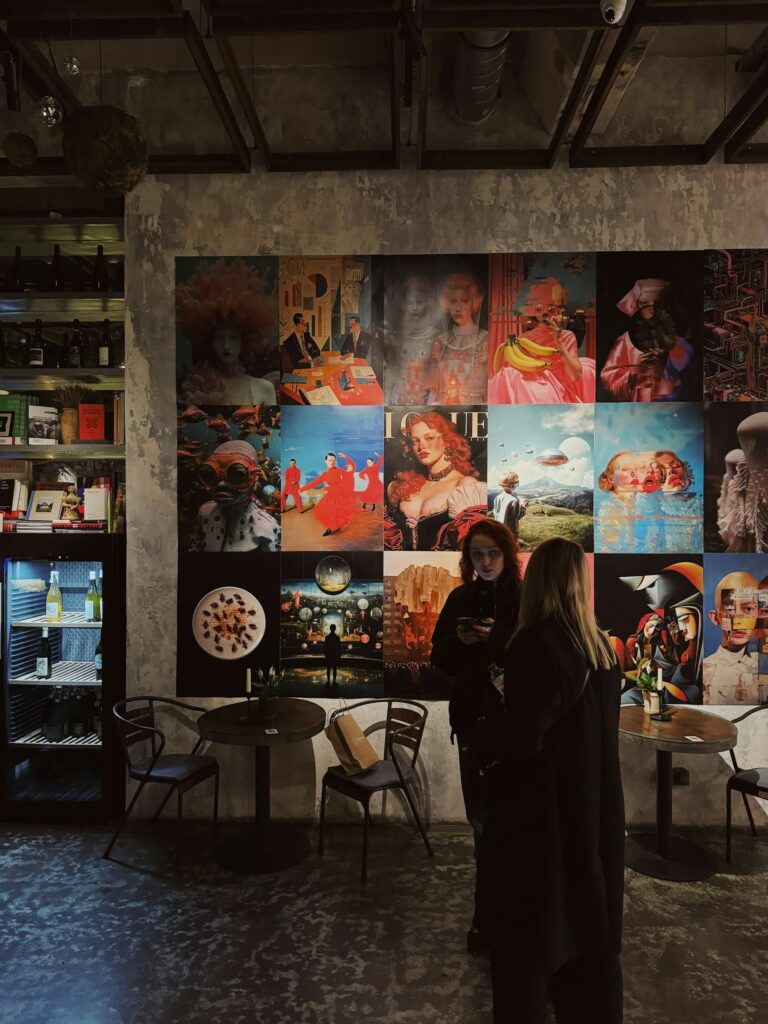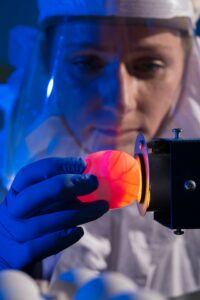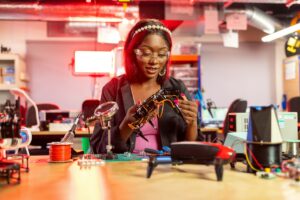Can Artificial Intelligence Produce Art That Is Superior to That of a Human? Do You Get to Decide?

Can Artificial Intelligence Produce Art That Is Superior to That of a Human? Do You Get to Decide?
You may go into any gallery or browse through your preferred art platform in the year 2025, and you could come across a painting that takes your breath away, only to find out that it was not painted by a human but rather created by a computer. Art created by AI may be found everywhere. Album covers, museum exhibits, fashion runways, and even book drawings — all of these are examples of its presence.
The issue that arises as a result of this surge in creative production is not just technical; rather, it is emotional, philosophical, and profoundly personal: Is it possible for artificial intelligence to produce art that is superior to that produced by humans?
The fundamental notion of art is being called into question by what is being said here. Not only that, but it’s possible that the solution isn’t as straightforward as picking a side.
How Exactly Does Artificial Intelligence Art Work?
Before we can provide a solution to the question, we must first clarify what it is that we are discussing. Visual works (paintings, drawings, and digital designs) that are created via the use of machine learning models that have been trained on enormous datasets of prior artwork are often referred to as AI-generated art. Users are able to explain a concept in language with the use of programs such as Midjourney, DALL·E, Runway, and Stable Diffusion. The artificial intelligence then transforms that input into a picture, often in a matter of seconds.
Nevertheless, it is not restricted to pictures. Artificial intelligence is now capable of writing poetry, composing music, designing 3D models, and even choreographing dance routines. These tools do not create from “imagination” in the same sense that people do; rather, they remix, mimic, and synthesize based on patterns that they have learnt from huge quantities of data they have collected.
- The question is, is it really creative? Or is it merely a replica that is incredibly convincing?
The Argument in Favor of Artificial Intelligence Being “Better”
Let’s be honest: there are certain works of artificial intelligence art that are really wonderful. It has the ability to imitate van Gogh, reimagine surrealism, or combine photorealism and imagination in ways that are so impressive that even seasoned designers are taken aback. It is capable of producing hundreds of permutations in a matter of seconds, pushing the creative limits that would take a human artist several days, weeks, or even years to investigate.
A.I. does not experience fatigue. It does not hold any self-doubts. It is not afraid of being criticized. Furthermore, it is capable of producing rapid and economical outcomes for a wide range of commercial applications, including advertising campaigns, concept art, and product mockups, which may occasionally beat human artists in terms of speed and style.
Clients may find this to be a dream come true. The experience may be comparable to that of being outrun by a machine that is devoid of any soul.
In what ways are human artists still superior?
The crux of the matter, however, rests in this particular point. It is not only the finished product that constitutes art; rather, it is the narrative that lies behind it. A brushstroke that is brimming with feeling is what it is. It is the photograph that was captured at the ideal imperfect moment. The poetry that contains the anguish of having been through anything. Artificial intelligence does not suffer. It is not a romantic relationship. It is not filled with either pleasure or misery. And many people believe that this is what gives human art its enchantment.
Context is an essential component of human-made art, which includes the artist’s life, values, and vision. Not only do we see a painting when we look at Frida Kahlo’s self-portraits, but we also sense the struggle that she was going through. Beethoven’s symphonies bring to mind the fact that he was on the verge of losing his hearing. Aesthetic beauty is not the only factor that contributes to this connection; empathy and resonance are also important factors.
Does artificial intelligence actually generate meaning, even if it is capable of producing beautiful results?
Will They Be Able to Cooperate?
This is the point at which the debate becomes more fascinating, as well as more optimistic. Rather of portraying it as a conflict between people and robots, increasing numbers of artists are increasingly embracing the concept of cooperation. Artificial intelligence is used by artists as a sketchpad, a collaborator in brainstorming, or a tool to explore ideas that they would not have come up with on their own.
Photographers use components of artificial intelligence into situations that are based in the actual world. Artificial intelligence is used by writers to overcome writer’s block. Before adding human emotion and texture, musicians play with loops that are created by artificial intelligence. Therefore, artificial intelligence is not a danger; rather, it is a new type of paintbrush.
With this partnership approach, the accuracy and strength of artificial intelligence, as well as the vision and fragility of the human soul, are both respected as contributions that each side brings to the table.
A Cloud of Ethical and Legal Concerns
It should come as no surprise that the emergence of artificial intelligence art is not without controversy. A great number of artificial intelligence models are trained on datasets that have been scraped from the work of actual artists, often without permission or acknowledgment. As a result, there have been lawsuits filed, furious demonstrations held, and an increasing number of requests for ethical usage and transparency.
Should contests that are intended for humans allow for the creation of art by artificial intelligence? Who owns a picture that was produced by artificial intelligence? In the event that you input a prompt and end up with a masterpiece, are you the artist or is the machine behind it? These are genuine issues that are now being discussed in judicial systems, educational institutions, and creative communities. It is not just the arts that will be influenced by the replies, but also the whole creative economy.
So, Is It Possible for AI to Create Better Art?
What is the truth? Better is a matter of opinion. When they look at a picture that was created by AI, some individuals will say that it is perfect. Some people will find it to be empty. In the realm of art, what we like is not always perfection; rather, it is sincerity, narrative, soul, revolt, and curiosity. The imprecise brushstroke, the rough edge, and the message that lies beneath the medium are all important.
We can be amazed by AI. Our conceptions of what art even is may be called into question by it. However, the question of whether or not technology can actually replace the human spark—that messy, emotional, and illogical component of creativity—is something that can only be decided by you.
Have a crack at it. Check out the artwork. Play the song for yourself. Look over the poem.
Also, ask yourself: Does it touch you in any way? Is it still relevant? In that case, maybe it is the only thing that matters.







